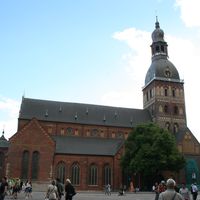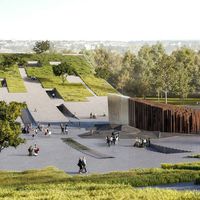Pompidou Centre

The Centre national d'art et de culture Georges Pompidou was the brainchild of President Georges Pompidou who wanted to create an original cultural institution in the heart of Paris completely focused on modern and contemporary creation, where the visual arts would rub shoulders with theatre, music, cinema, literature and the spoken word.
Housed in the centre of Paris in a building designed by Renzo Piano and Richard Rogers, whose architecture symbolises the spirit of the 20th century, the Centre Pompidou first opened its doors to the public in 1977. After renovation work from 1997 to December 1999, it opened to the public again on 1 January 2000, with expanded museum space and enhanced reception areas. Since then it has once again become one of the most visited attractions in France. Some 6 million people pass through the Centre Pompidou's doors each year, a total of over 190 million visitors in its 30 years of existence.
In a unique location under one roof, the Centre Pompidou houses one of the most important museums in the world, featuring the leading collection of modern and contemporary art in Europe, a vast public reference library with facilities for over 2,000 readers, general documentation on 20th century art, a cinema and performance halls, a music research institute, educational activity areas, bookshops, a restaurant and a café.
Unswerving in its interdisciplinary vocation and its core mission - to spread knowledge about all creative works from the 20th century and those heralding the new millennium - each year the Centre Pompidou holds thirty or so public exhibitions plus international events: cinema and documentary screenings, conferences and symposiums, concerts, dance and educational activities.
Similar content
posted on
10 Oct 2016
posted on
30 Nov 2011
29 Nov 2018
26 Nov 2016
14 Nov 2016



